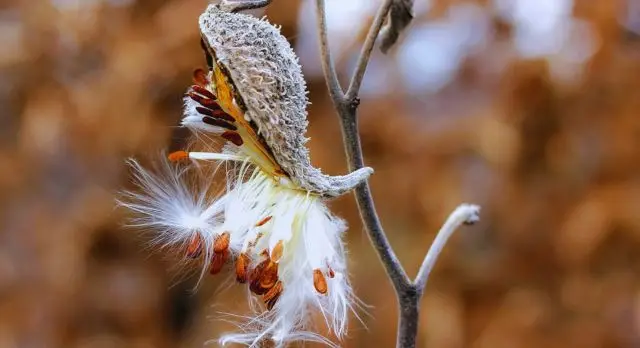What do silkworms turn into? Life-Cycle of a Silkworm
Silkworms are fascinating creatures that have been an integral part of human history for thousands of years. They are known for their ability to produce silk, a valuable and luxurious material. But have you ever wondered what silkworms turn into? Or what is the life cycle of silkworm, do they become moths or butterflies? In this article, we’ll unravel the mystery of silkworm metamorphosis in simple terms that anyone can understand.

What do silkworms turn into? Life-Cycle of a Silkworm
For better understanding of what do silkworms turn into here we have mentioned life cycle stage of silkworm, Let’s explore each of these stages.
- Egg Stage
- Larva (Caterpillar) Stage
- Cocoon Stage
- Adult Silkworm Stage
1. The Journey Begins: Egg Stage
Silkworms start their life as eggs. These tiny eggs are usually laid by a female silkworm moth on the leaves of mulberry trees. After about 10 days, the eggs hatch, giving birth to silkworm larvae, also known as caterpillars. These young silkworms are incredibly small and fragile, but they have an enormous appetite!
Key Point: Silkworms begin their life as eggs and hatch into larvae, which are tiny caterpillar-like creatures.
2. Larva (Caterpillar) Stage
Once the silkworm larvae emerge from their eggs, they begin to eat voraciously. They munch on mulberry leaves continuously to fuel their rapid growth. In fact, they can eat so much that they increase their body weight by thousands of times in just a few weeks!
Here are some interesting facts about silkworm larvae during this stage:
- They shed their skin several times as they grow, which is called molting.
- Silkworm larvae are often kept in controlled environments by silk farmers to ensure they have a constant supply of mulberry leaves.
- Preparing for Transformation: Pupa Stage
- After about four to six weeks of non-stop eating and growing, the silkworm larvae stop eating and become less active. This signals the beginning of their next phase, known as the pupa stage. During this stage, they undergo a remarkable transformation.
To prepare for this change, the silkworms secrete a sticky fluid and spin a protective cocoon around themselves. This cocoon is made of a single thread of silk that can be several thousand feet long! Inside the cocoon, the silkworms begin their transformation into a completely different creature.
3. Metamorphosis Inside the Cocoon Stage
Inside the cocoon, the silkworm undergoes a process called metamorphosis. This is where the magic happens! The silkworm’s body starts to change dramatically. It releases enzymes that break down its own body tissues and reform them into entirely new structures.
After about two weeks inside the cocoon, the silkworm emerges as a completely transformed creature, but it’s not yet the end of the story.
4. The Final Reveal: Adult Silkworm Stage
When the silkworm finally emerges from its cocoon, it has transformed into an adult silk moth. This moth is very different from the humble larva that spun the cocoon. It has a slender body, feathery antennae, and wings.
However, there’s a catch. The adult silk moth has a very short lifespan. Its sole purpose is to reproduce and lay eggs. In fact, it doesn’t even have a mouth! The adult moth’s only job is to find a mate, lay eggs, and continue the silkworm life cycle.
The Circle of Life Continues
Once the adult silk moth has fulfilled its purpose, it lays eggs, and the cycle begins anew. The female moth lays hundreds of eggs, and the life cycle of silkworms starts over as these eggs hatch into larvae.
This incredible journey from egg to larva, pupa, and adult moth is what silkworms turn into. It’s a cycle that has been harnessed by humans for thousands of years to produce one of the most sought-after natural fibers: silk.
But why is this transformation so important, and what makes silkworms so special? Let’s take a look at some key takeaways.
Related article – How Long do Silkworms Live
Key Takeaways
- Silkworms start their life as eggs and hatch into tiny larvae.
- Silkworm larvae are voracious eaters and grow rapidly by consuming mulberry leaves.
- During the pupa stage, silkworms spin a cocoon and undergo metamorphosis.
- After metamorphosis, they emerge as adult silk moths, ready to reproduce.
- The adult silk moth’s sole purpose is to lay eggs and continue the life cycle.
- This cycle has been harnessed by humans for centuries to produce silk, a valuable natural fiber.
In conclusion, silkworms undergo a fascinating transformation from tiny eggs to voracious larvae, then into pupae inside a protective cocoon, and finally into adult silk moths. This remarkable life cycle has made silkworms not only a subject of scientific curiosity but also a source of valuable silk production for humanity. So, the next time you see a silkworm, you’ll know the incredible journey it’s destined to take.
FAQs on what do silkworms turn into
Do silkworms turn into moths?
Yes, silkworms do turn into moths. When silkworms go through their life cycle, they transform into adult silk moths.
Do silkworms turn into butterflies?
No, silkworms do not turn into butterflies. They become adult silk moths, which are different from butterflies. So, they are more closely related to moths than butterflies.
Reference – Wikipedia
